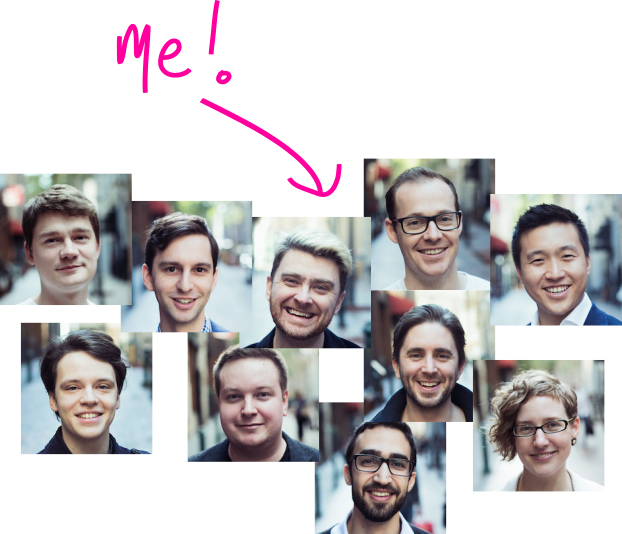Ideas and actions for getting, and keeping, women in technology
In my job I’m almost entirely surrounded by men.

I work as a Machine Learning Engineer at Silverpond. It’s definitely the best place I’ve ever worked, but there’s one area that we’re actively trying to improve: recruiting women into roles as software engineers and machine learning engineers.
In this post I’ll cover some ideas I’ve had along these lines.
The Recruiting Side
When I’ve been involved in recruiting people, in recent history, it’s tended to be almost entirely by word of mouth. My process is:
- I find out there’s a job available,
- I think about the people I know who might be good,
- I approach them.
This actually works very well, but only because I tend to go to a lot of events, and I meet a lot of people. The one key problem with this approach is: I mostly end up recommending men.
I think that the reason for this can be somewhat explain by various cognitive biases (notably, “Ingroup bias”), and so I’ve been thinking about how to address it.
I was pointed at the few articles along these lines, and I’ll summarise them here:
Avoiding the ‘merit trap’ - Chief Executive Women and Male Champions of Change
- Summary: “Merit-based” hiring is correlated with under-representation for diverse teams.
- Thoughts:
- Be aware that any definition of “merit” is somewhat subjective and current-circumstances dependant.
- Deciding which qualities are meritable isn’t particularly easy.
- This might mean that “puzzle”-based hiring; i.e. “complete this puzzle which when solved gives an email address that you can email for a job” is potentially not a good approach.
- Actions:
- As much as you can, don’t pre-suppose a list of skills and qualities, because your selection is biased to the intersection of skills that your current team has, or that you’ve seen before.
- Allow the candidates to express their own individuality in the interviewing process.
- Prefer the person that adds something new to the team.
Beginning with Ourselves - Airbnb
- Summary: Airbnb was didn’t have many women in their data science team; they adjusted their interview process and grew the community, both of which had an impact.
- Thoughts:
- Your interview process can be biased, and it’s probably hard to figure out when that is. If someone tells you, take it seriously.
- Actions:
- Build the community you want to see.
- Make your interview process friendly and welcoming to all.
- If possible, have a balance of male/female involvement in the interview.
How blind auditions help orchestras to eliminate gender bias - The Guardian, and How Companies Are Taking Unconscious Bias Out of the Hiring Equation - LinkedIn Talent Blog
- Summary: If you want to not be biased towards a certain gender, then just keep the gender hidden until they’re employed!
- Thoughts:
- It’s interesting, but ultimately unsatisfying. It wouldn’t help for internal promotions, say. But maybe it’s a useful hack to bootstrap the process.
- It’s not practical for me at Silverpond.
- Actions:
- When thinking about a candidate, and making some subjective assesment, think if you would make this same assesment if the gender of the candidate was unknown or switched.
Our experiences in elevating the representation of women in leadership - Male Champions of Change
- Summary: Diversity in leadership can be achived by small concrete steps: getting the CEO interested, setting up metrics, building communities and support networks, and reporting on growth and successes achieved as a result of these actions.
- Thoughts:
- This is a very “corporate” article, but contains some good points.
- Actions:
- Convince or demonstrate to the people in charge of hiring that they should become very interested in diversifying the team; without this you will struggle.
- Set up mechanisms to track progress numerically.
- Set quantitive targets.
- Build and support the community you want to see.
Concretely, what I’m going to do in this regard — getting more diverse applicants into the top of our “hiring funnel” — is:
- Network with a more diverse group; head to events I’ve not been to before,
- Improve the messaging on our website around hiring, and write down some statistics that we can start tracking,
- Build and support the community.
- When thinking about a candidate, and making some subjective assesment, think if I would make this same assesment if the gender of the candidate was unknown or switched.
- Don’t pre-suppose an overly-specific list of skills and qualities.
and during the interview process, I think the following ideas are useful to keep in mind:
- Make sure everyone has an opportunity to feel comfortable,
- Allow the candidates to express their own individuality,
- Does this person add something new to the team?
- Is the job a cool opportunity for this person?
This is kind of a Part-1 of my thoughts on this topic. I’ve had this post sitting in drafts for a while, so I thought I’d publish it. I expressed some related ideas in our blog. Let’s see how it progresses over the next few months.